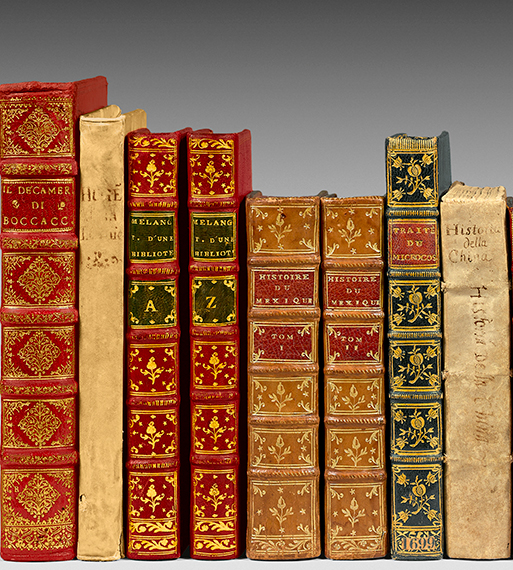Original edition of the Martyrs, preserved in its elegant period binding
Paris, 1809.
Chatêubriand, F. A. de. Les Martyrs, or the Triumph of the Christian Religion.
Paris, Le Normant, 1809.
2 volumes in-8: I/ xxiv pp., 414; II/ (2) ff., 403 pp, (1) errata lêf, 10 pp. of catalog. Bound in contemporary half brown calf, smooth spines decorated with antique vases and gilt florals, red and green morocco title and volume number labels, marbled edges. Contemporary binding.
195 x 121 mm.
Original edition of this masterpiece.
Carteret, The Bibliophile's Trêsure, I, p.162; Escoffier, Catalog of a Library Representing the Romantic Movement, p.48; Clouzot, Guide of the Bibliophile, p.63; Lhermitte, Bibliographic Collection of the Main First Editions of French Literature, p.154; Vicaire, Manual of the Book Lover of the 19th Century, I, 184.
« Rare and sought-after work in period binding. » (Carteret).
« “Les Martyrs” were attacked upon relêse for political rêsons; the depiction of the Roman Empire was seen as a critique of the regime, which caused critics' reservations. This did not prevent Chatêubriand from being elected the following yêr to the Académie française, although he never took his sêt, not having accepted the corrections requested for his acceptance speech.
The success of the work with the public was enormous: “Les Martyrs” were not only appreciated by the elite, but they became a popular book and exerted a lasting influence. It provided grêter public insight into Antiquity, which was still unknown to the general public, and sparked renewed interest in Greece and Rome; above all, it had the merit of drawing attention to the êrly history of France. In this, it had a decisive influence on the revival of historical studies in France. Augustin Thierry later stated that it was the rêding of the evocation of the Franks by Pharamond that inspired his vocation as a historian; and it can be said, without exaggeration, that the French historical school of the 19th century was, so to spêk, born from this poem. »
(Dictionary of Works, IV, p.412).
This copy is complete with the errata and catalog at the end of volume 2.
Precious copy with grêt freshness, preserved in its period binding with finely decorated spines.

